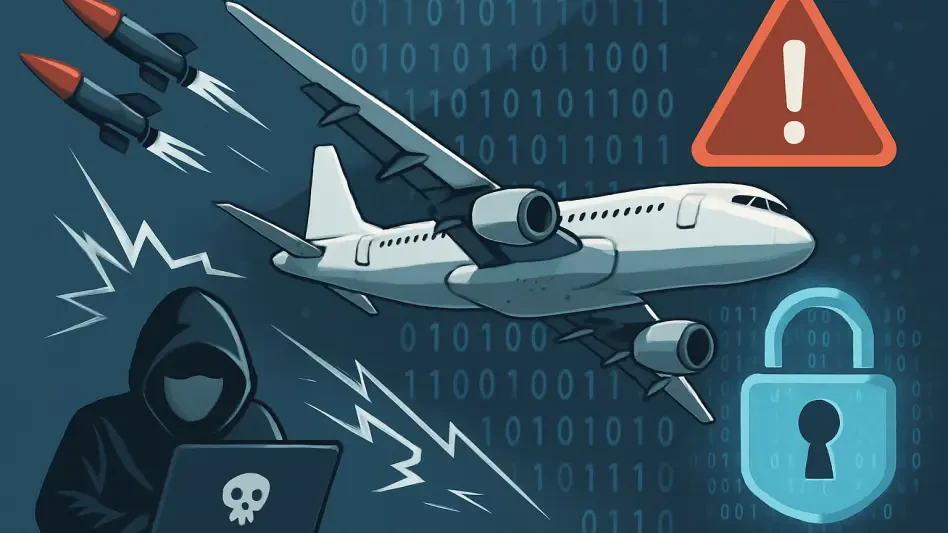The aviation sector, an essential network with tremendous economic impact, is currently grappling with an evolving challenge: cyber threats targeting its digital infrastructure. Particularly concerning is a cybercriminal organization identified as Scattered Spider, which has directed its sophisticated attacks toward this industry. Central to their strategy is social engineering, where deceptive tactics manipulate employees through methods like impersonation and voice phishing to breach multi-factor authentication systems. Recent reports from the Federal Bureau of Investigation highlight this pressing concern, revealing the group’s ability to infiltrate airline systems by exploiting human vulnerabilities rather than merely targeting technological weaknesses.
Understanding the Cyber Threat Landscape
In this study, the focal point was to investigate the methods employed by Scattered Spider in compromising airline digital systems. Key questions addressed included how these cybercriminals effectively bypass security protocols and what implications these breaches hold for airline operations. This group has demonstrated a capability to execute intricate attacks, mainly by employing social engineering to manipulate IT help desks and persuade them to introduce unauthorized access devices. This not only facilitates data theft but also allows the deployment of ransomware, resulting in significant disruptions and financial losses.
Significance of Cybersecurity in the Aviation Sector
Cybersecurity in the airline industry holds paramount importance due to the intricate web of aviation and third-party connections, making it increasingly vulnerable to breaches. The repercussions of cyberattacks can be far-reaching, threatening both operational efficiency and passenger safety. Therefore, understanding and addressing these security challenges are crucial to safeguarding critical infrastructures. The rising rate of such attacks, especially from sophisticated entities like Scattered Spider, underscores the urgent need for enhanced cyber defense measures to protect sensitive information and preserve trust in air travel.
Research Methodology, Findings, and Implications
Methodology
The research methodology integrated a mixed approach, combining case studies with in-depth interviews of cybersecurity experts. Analysis of real-world cyber incidents was conducted to understand specific attack vectors and techniques used by Scattered Spider. Furthermore, collaborations with aviation companies and security consultants facilitated the collection of empirical data essential for identifying security flaws and suggesting remedial strategies.
Findings
The study revealed that Scattered Spider’s use of social engineering has proven to be alarmingly effective. The group excels in crafting convincing impersonations, which allow them to deceive even well-trained support staff. Hawaiian Airlines and Canada’s WestJet have both had recent cybersecurity incidents attributed to this group, indicating the scale and impact of these threats. Unlike traditional attacks that mainly exploit software vulnerabilities, Scattered Spider’s emphasis on exploiting human behavior presents a distinct and challenging threat vector for the aviation industry.
Implications
These findings highlight the necessity for the aviation industry to reevaluate its security protocols, especially those involving identity verification and multi-factor authentication processes. By prioritizing employee training and strengthening authentication mechanisms, the sector can mitigate the risks posed by social engineering attacks. The research suggests more robust communication between airlines and cybersecurity experts to enhance resilience against such evolving threats, emphasizing a comprehensive approach that tackles both human and technological factors.
Reflection and Future Directions
Reflection
The research process illuminated the complexities involved in defending against human-centric cybersecurity threats. Challenges like limited data availability due to confidentiality constraints, as well as the adaptive nature of cybercriminal methodologies, were particularly notable. Nevertheless, the study was successful in pinpointing critical vulnerabilities and recommending mitigation measures, enhancing industry preparedness without compromising operational efficiency.
Future Directions
Moving forward, there is a compelling need for continuous research, focusing on areas like advanced impersonation detection and predictive security. Furthermore, exploring collaborative frameworks that enable real-time threat intelligence sharing among industry participants could prove invaluable. Future investigations should also concentrate on integrating artificial intelligence tools designed to recognize and thwart sophisticated social engineering schemes proactively.
Conclusion and Final Thoughts
As cyber threats within the airline industry become increasingly sophisticated, understanding and effectively counteracting groups like Scattered Spider has never been more crucial. This research highlighted the vulnerabilities exploited by social engineering tactics and emphasized the pressing need for enhanced cybersecurity measures that blend technological innovation with human vigilance. It is clear that future strategies must prioritize both preventive and reactive mechanisms, encompassing robust identity verification processes and collaborative efforts across industry stakeholders. By doing so, airlines can fortify their defenses against emerging threats, ensuring the ongoing safety and resilience of global aviation networks.








